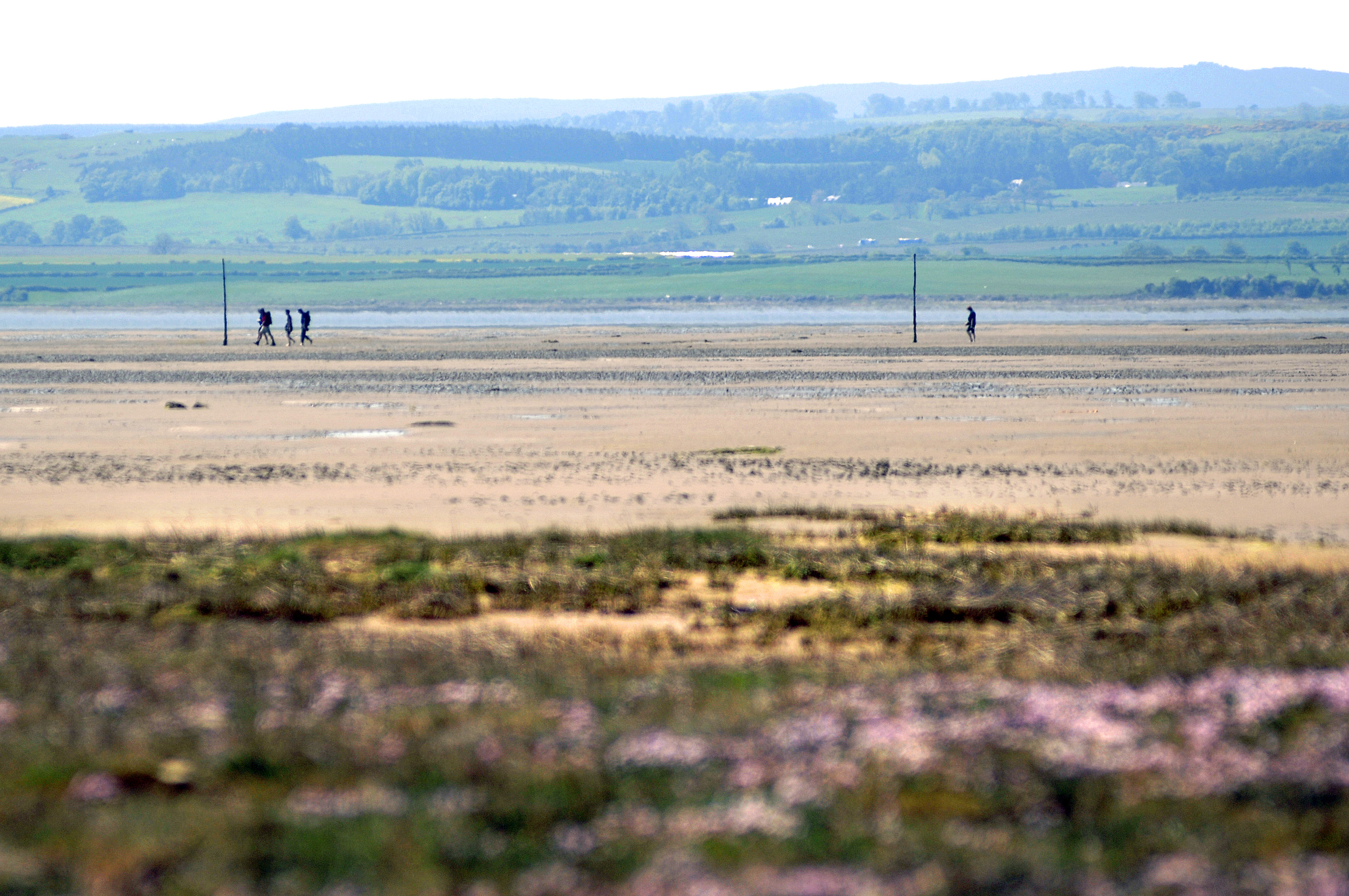What an amazing day we had on Saturday 25th March when a group of eager volunteers gathered to immerse themselves in the landscape and in art. The weather was on our side, with glorious sunshine and bright blue skies.
Meeting at the Grace Darling Museum in Bamburgh, artist Lindsay Duncanson explained the types of techniques the group would be using for the day. These included the use of Cyanotype, a photographic printing process that produces a cyan-blue print.
Engineers used the process well into the 20th century as a simple and low-cost process to produce copies of drawings, referred to as blueprints. The process uses two chemicals: ammonium iron(III) citrate and potassium ferricyanide.
The group then set off to the beach for a walk along the Whin Sill, where geological expert, Dr Ian Kille, explained how the Whin Sill was created. Towards the close of Carboniferous Period some 295 million years ago, crustal extension caused by movement of the Earth’s tectonic plates allowed the emplacement of igneous intrusions of magma across much of northern England.
Along the way, the group picked up shells, small stones, dried seaweed and a variety of other found objects in order to arrange them ready for the cyanotype composition. It was amazing to see the yellow wash, turn to a mucky grey green and then when placed into the water a vivid electric blue emerged!
The group then turned their attention to sitting quietly in the landscape and interpreting the sounds around them into marks on a page. Some of the group transferred the marks to a musical score sheet with the idea that their mark making will create another form of music.
Thank you to all those who attended, the Grace Darling Museum for their hospitality and we're very much looking forward to the next session on Holy Island on Saturday 1st April.
Other Photos

